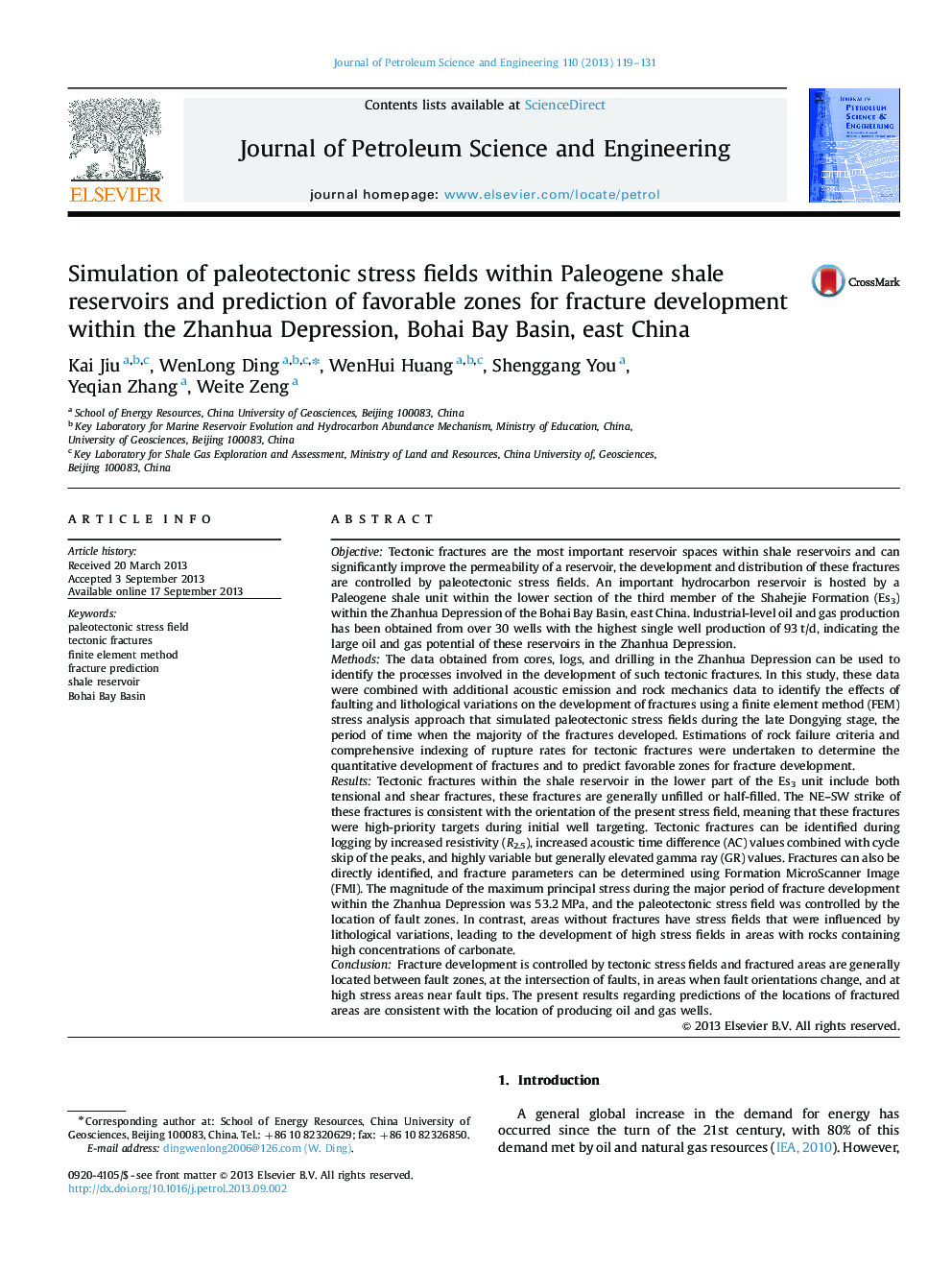| کد مقاله | کد نشریه | سال انتشار | مقاله انگلیسی | نسخه تمام متن |
|---|---|---|---|---|
| 1755197 | 1522831 | 2013 | 13 صفحه PDF | دانلود رایگان |

• The characteristics of lacustrine shale fracture in the Bohai Bay Basin.
• Simulation of the paleotectonic stress field with shale reservoir.
• The prediction of favorable zones for shale tectonic fracture development.
• The effects of faults and lithology on the distribution of shale tectonic fracture.
ObjectiveTectonic fractures are the most important reservoir spaces within shale reservoirs and can significantly improve the permeability of a reservoir, the development and distribution of these fractures are controlled by paleotectonic stress fields. An important hydrocarbon reservoir is hosted by a Paleogene shale unit within the lower section of the third member of the Shahejie Formation (Es3) within the Zhanhua Depression of the Bohai Bay Basin, east China. Industrial-level oil and gas production has been obtained from over 30 wells with the highest single well production of 93 t/d, indicating the large oil and gas potential of these reservoirs in the Zhanhua Depression.MethodsThe data obtained from cores, logs, and drilling in the Zhanhua Depression can be used to identify the processes involved in the development of such tectonic fractures. In this study, these data were combined with additional acoustic emission and rock mechanics data to identify the effects of faulting and lithological variations on the development of fractures using a finite element method (FEM) stress analysis approach that simulated paleotectonic stress fields during the late Dongying stage, the period of time when the majority of the fractures developed. Estimations of rock failure criteria and comprehensive indexing of rupture rates for tectonic fractures were undertaken to determine the quantitative development of fractures and to predict favorable zones for fracture development.ResultsTectonic fractures within the shale reservoir in the lower part of the Es3 unit include both tensional and shear fractures, these fractures are generally unfilled or half-filled. The NE–SW strike of these fractures is consistent with the orientation of the present stress field, meaning that these fractures were high-priority targets during initial well targeting. Tectonic fractures can be identified during logging by increased resistivity (R2.5), increased acoustic time difference (AC) values combined with cycle skip of the peaks, and highly variable but generally elevated gamma ray (GR) values. Fractures can also be directly identified, and fracture parameters can be determined using Formation MicroScanner Image (FMI). The magnitude of the maximum principal stress during the major period of fracture development within the Zhanhua Depression was 53.2 MPa, and the paleotectonic stress field was controlled by the location of fault zones. In contrast, areas without fractures have stress fields that were influenced by lithological variations, leading to the development of high stress fields in areas with rocks containing high concentrations of carbonate.ConclusionFracture development is controlled by tectonic stress fields and fractured areas are generally located between fault zones, at the intersection of faults, in areas when fault orientations change, and at high stress areas near fault tips. The present results regarding predictions of the locations of fractured areas are consistent with the location of producing oil and gas wells.
Journal: Journal of Petroleum Science and Engineering - Volume 110, October 2013, Pages 119–131